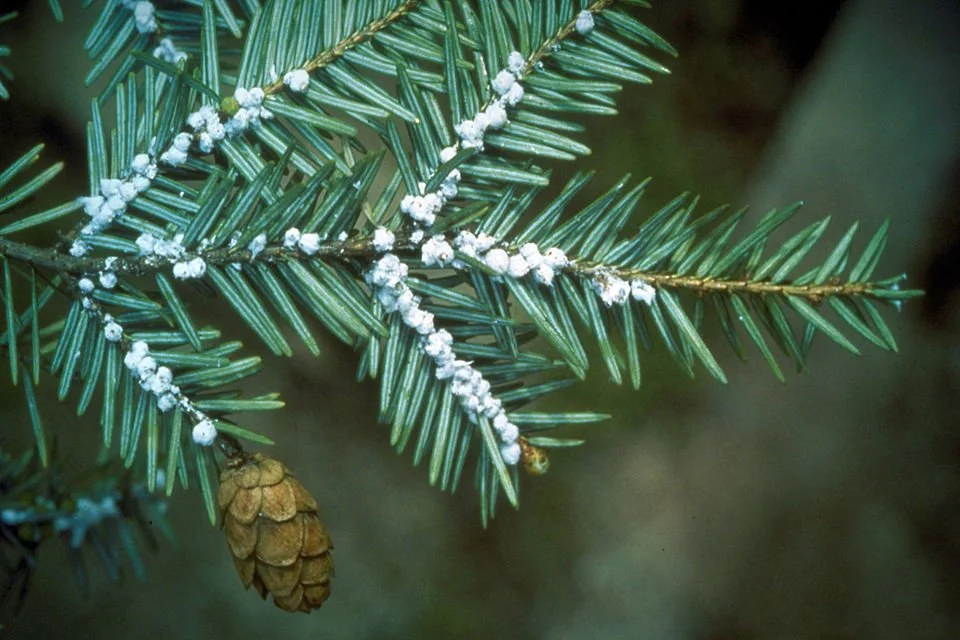Protecting Our Forests: A Critical Mission for Woodworkers
As someone who works intimately with reclaimed wood, I understand firsthand the irreplaceable value of our native tree species. Each piece that passes through my workshop carries decades or centuries of history – stories of growth, resilience, and the natural beauty that makes American hardwoods so prized by craftspeople worldwide.
Hemlock wolly adelgid on western hemlock
By Connecticut Agricultural Experiment Station Archive, Connecticut Agricultural Experiment Station / © Bugwood.org, CC BY 3.0 us, https://commons.wikimedia.org/w/index.php?curid=8339006
Currently, these beloved tree species are confronting serious challenges unlike anything we've seen before. From emerald ash borer devastating ash populations to hemlock woolly adelgid attacking Eastern hemlocks, invasive pests and pathogens are fundamentally changing our forests. For those of us who depend on these materials – and more importantly, for the ecosystems and communities that rely on healthy forests – this crisis demands attention and action.
We've witnessed this devastation before. In a recent article I wrote about the American Chestnut, I explored how a single invasive species can completely transform an entire ecosystem. The American Chestnut blight, introduced in the early 1900s, virtually eliminated what was once called the "redwood of the East" – a species that made up nearly 25% of Eastern forests. The ripple effects were enormous: wildlife lost a crucial food source, forest ecosystems shifted dramatically, and entire communities that depended on chestnut timber and nuts saw their way of life disappear. The chestnut's story serves as a sobering reminder of what we stand to lose when we don't act quickly enough to protect our native species. (Watch this AMAZING video by The Appalachian Storyteller: When Giants Roamed Appalachia: The Story of the Chestnut)
The Nature Conservancy has published an essential article about the scientists and researchers working tirelessly to save these imperiled trees. Their work focuses on finding "lingering trees" – individual specimens that show natural resistance to these threats – and breeding them to create future generations of resistant forests. While time is critical, the dedication and teamwork of researchers offers genuine optimism for success.
Read the full story: Trees in Peril
As woodworkers, we have a unique perspective on the value of these species. Every board, every grain pattern, every unique characteristic represents not just material for our craft, but a living connection to the forests that sustain us all.
Gray Hill Woodworking LLC creates handcrafted, functional art using 98% sustainably reclaimed wood materials. Each piece is crafted by hand, celebrating the natural beauty and character found in rescued materials throughout New Jersey, Pennsylvania, New York, and Maryland. By choosing reclaimed wood, we honor both the trees of the past and help preserve the forests of the future.

